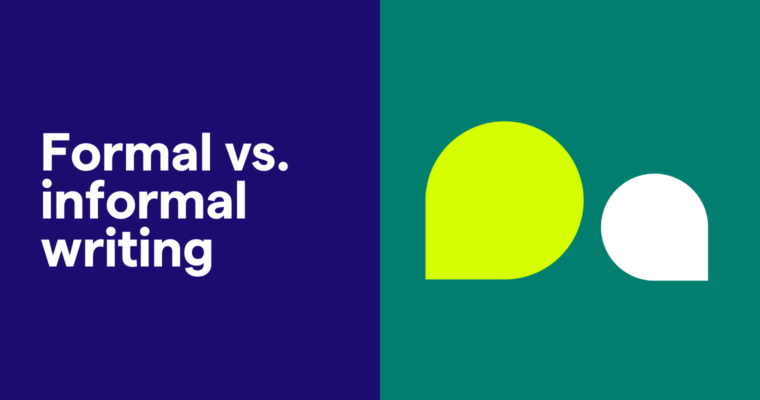
Memoir and autobiography are often used synonymously. These two nonfiction genres are very similar, so it’s easy to get them confused. They’re both the story of someone’s life written by that person, and they both use the pronouns “I” and “me” since they’re written in the first person. They’re both true stories from the author’s life. But there are some key differences.
A memoir is a nonfiction narrative in which the author shares their memories from a specific time period or reflects upon a string of themed occurrences throughout their life. An autobiography is a factual and historical account of one’s entire life from beginning to end.
If you’ve struggled to understand the difference between autobiography and memoir, you’ve come to the right place to learn more.
What is a memoir?
Memoir comes from the French word mémoire, which means memory. A memoir is a nonfiction but subjective collection of narratives in which the author remembers experiences, emotions, and events from a certain period in their life. Memoirs focus on intimately conveying their perception of these memories in a way that is emotionally truthful but isn’t fact-checked.
How do you pronounce memoir?
Memoir can seem like a tricky word to pronounce, but it’s actually quite simple. The beginning is “mem” just like “memory.” The end is essentially an elongated pronunciation of “war.” Put together phonetically, it sounds like “MEM-waar.” You can consult an online dictionary to hear an audio recording of this word being pronounced out loud.
What is memoir as a literary genre?
A memoir is a literary nonfiction genre in which the author recounts their experiences during a significant period of their life. They might focus on their childhood and family, a spiritual journey, their experience with fame, a big adventure, or many different but thematically related events in a collection of personal essays. These days, some memoirs are even graphic novels illustrated by the author.
How is a memoir structured?
There isn’t one right way to structure a memoir. Memoir authors can experiment with how they order the events they’re recounting, whether they write in the past or present tense, use a linear narrative, or divide their memoir into sections.
While a memoir is a flexible genre, it should include these things:
- A specific theme
- Something the author overcame
- First-person writing style
- Supporting details and events from the past and the people who were present
- Storytelling basics like plot and setting
- Honesty
Memoirs typically fall into one of these structures:
- Flashbacks: The author jumps back and forth between the past and present to provide backstory
- Chronological: The author writes about their experiences in the order in which they happened.
- Themed: The author includes only memories that fall into one specific theme.
- Overcoming: The author focuses on one struggle and how it affected their life.
What is an autobiography?
An autobiography is a nonfiction account of someone’s life that they wrote themselves. Usually, an autobiography covers the author’s entire life up to the point of writing in chronological order and is sometimes (though not always) drafted in the later years of the author’s life. The events recounted in autobiographies are factual and fact-checked. They’re often used as resources by historians.
Many autobiographies are written by people who have some claim to fame who write about their journey to becoming famous. The author might be a politician, change-maker, business figure, professional athlete, or celebrity. But anyone can write an autobiography.
The etymology of the word autobiography is made up of three Greek root words: “auto,” meaning self; “bio,” meaning life; and “graph” meaning write.
What is a biography?
A biography is also a nonfiction account of someone’s life, but it’s written by someone else. Biographies are typically based on interviews, letters, personal journals, photos, reference books, newspapers, and digital media. The word biography has the same roots as autobiography but without the “auto” prefix.
What is an autobiography as a literary genre?
Autobiographies fit into the nonfiction genre. They are retrospective narratives that tell the story of the majority of an author’s life. Autobiographies are factual and chronological. Authors in this genre tend to focus on providing context for their life and personal development within a historical and cultural framework.
How is an autobiography structured?
Traditionally, autobiographies have been written chronologically. But nowadays, there are two common structures for autobiographies. Each of these structures follows traditional storytelling principles. These two structures are standard across the publishing industry.
Most autobiographies follow a chronological structure like this:
- Foundation: childhood experiences, family members, community, home life, school, friendships, family traditions
- Adversity: pivotal moments that lead to life achievements
- Conclusion: lessons learned after overcoming or embracing adversity
Some autobiographies follow a structure that the writer Joseph Campbell called “the hero’s journey,” which includes these elements:
- Adversity: a life crisis or pivotal moment that was a catalyst for the life they lead today
- Foundation: childhood experiences, family traditions, community, school, friendship, and home life
- Conclusion: how they overcame adversity and the lessons they learned along the way
“The hero’s journey” format can be used to grab a reader’s attention. It provokes curiosity and a desire for resolution in the reader that compels them to keep reading.
Memoir vs. autobiography examples
Memoirists selectively share the stories and emotions that contribute to their chosen theme or time period. Here are some popular memoirs from the past and present:
- A Heartbreaking Work of Staggering Genius by Dave Eggers
- A Moveable Feast by Ernest Hemingway
- Angela’s Ashes by Frank McCourt
- An Astronaut’s Guide to Life on Earth by Chris Hadfield
- Between the World and Me by Ta-Nehisi Coates
- Dreams from My Father: A Story of Race and Inheritance by Barack Obama
- Eat, Pray, Love: One Woman’s Search for Everything Across Italy, India and Indonesia by Elizabeth Gilbert
- Falling Leaves: The Memoir of an Unwanted Chinese Daughter by Adeline Yen Mah
- Hunger: A Memoir of (My) Body by Roxane Gay
- I Am Malala: The Girl Who Stood Up for Education and Was Shot by the Taliban by Malala Yousafzai and Christina Lamb
- I Know Why The Caged Bird Sings by Maya Angelou
- Just Kids by Patti Smith
- Kitchen Confidential: Adventures in the Culinary Underbelly by Anthony Bourdain
- Love, Loss, and What We Ate by Padma Lakshmi
- Me Talk Pretty One Day by David Sedaris
- My Life on the Road by Gloria Steinem
- Night by Elie Wiesel
- On Writing: A Memoir of the Craft by Stephen King
- Orange is the New Black: My Year in a Women’s Prison by Piper Kerman
- Out of Africa by Isak Dinesen
- The Glass Castle by Jeannette Walls
- The Woman Warrior: Memoirs of a Girlhood Among Ghosts by Maxine Hong Kingston
- The Year of Magical Thinking by Joan Didion
- The Color of Water: A Black Man’s Tribute to His White Mother by James McBride
Autobiographies are factual accounts of someone’s entire life. Here are some examples of popular autobiographies throughout history:
- Agatha Christie: An Autobiography by Agatha Christie
- Autobiography of a Yogi by Paramahansa Yogananda
- Autobiography of an Androgyne by Earl Lind
- Autobiography of Mark Twain by Mark Twain
- Cash: The Autobiography by Johnny Cash
- Chronicles: Volume One by Bob Dylan
- I Am Ozzy by Ozzy Osbourne
- Living for Change: An Autobiography by Grace Lee Boggs
- Long Walk to Freedom by Nelson Mandela
- Narrative of the Life of Frederick Douglass By Frederick Douglass
- Open: An Autobiography by Andre Agassi
- The Autobiography of Benjamin Franklin by Benjamin Franklin
- The Autobiography of Malcolm X by Malcolm X and Alex Haley
- The Interesting Narrative of the Life of Olaudah Equiano by Olaudah Equiano
- The Story of My Life by Helen Keller
Memoir vs. autobiography FAQs
What is a memoir?
A memoir is a nonfiction first-person narrative written about a specific theme or time in the author’s life.
What is an autobiography?
An autobiography is a factual, nonfiction first-person account of the majority of the author’s life, usually in chronological order.
What are the key similarities between memoir and autobiography?
Autobiographies and memoirs both have these elements:
- Nonfiction
- Written in the first person
- Recounted events from the author’s life
How do memoirs and autobiographies differ?
Autobiographies:
- Factual
- Usually chronological
- Cover the majority of the author’s life
Memoirs:
- Emotion-focused
- Only cover a piece of the author’s life or a specific theme
- Can have many different types of timelines






